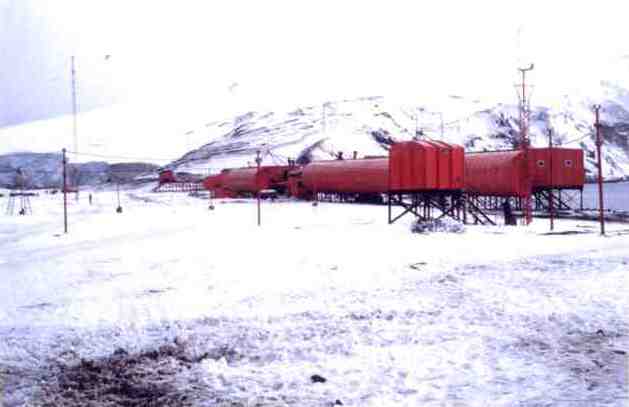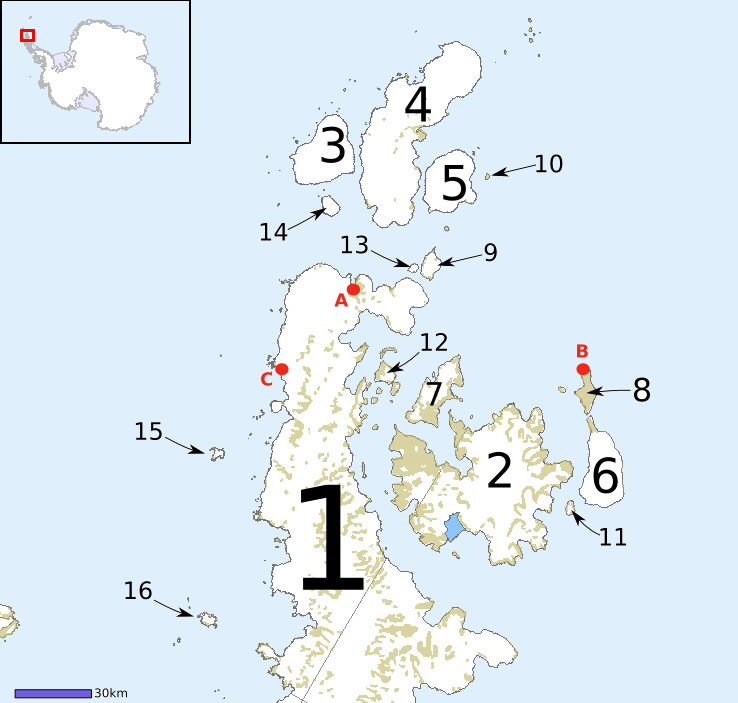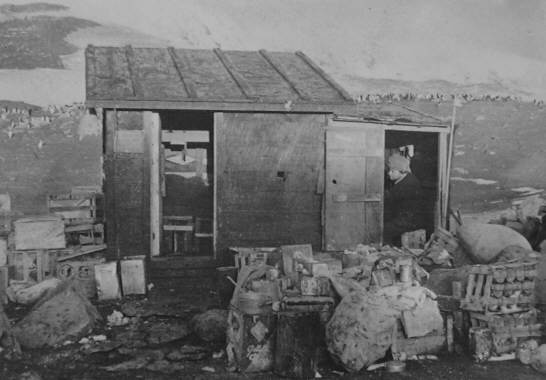|
Operation Keyhole
Operation Keyhole was a British special operation to recapture Thule Island in the South Sandwich Islands during Operation Corporate in the 1982 Falklands War. The operation took place from 19 to 20 June 1982. Background A base, called Corbeta Uruguay, had been built by Argentina in part to reinforce its territorial claims on British-held territory in the South Atlantic. Ostensibly a meteorological research station, it was also used by Argentine military personnel. The British government became aware of the base in December 1976. Between then and the outbreak of the 1982 war, Britain had sought unsuccessfully to reach a diplomatic solution to the problem. Operation After the Argentine surrender on the Falkland Islands on 14 June 1982, a task force composed of frigate , patrol ship , tanker RFA ''Olmeda'' and tug ''Salvageman'' sailed to the South Sandwich Islands with instructions to end the Argentine presence there. Reconnaissance marines from ''Endurance'' and 42 Commando ... [...More Info...] [...Related Items...] OR: [Wikipedia] [Google] [Baidu] |
Falklands War
The Falklands War ( es, link=no, Guerra de las Malvinas) was a ten-week undeclared war between Argentina and the United Kingdom in 1982 over two British dependent territories in the South Atlantic: the Falkland Islands and its territorial dependency, South Georgia and the South Sandwich Islands. The conflict began on 2 April, when Argentina invaded and occupied the Falkland Islands, followed by the invasion of South Georgia the next day. On 5 April, the British government dispatched a naval task force to engage the Argentine Navy and Air Force before making an amphibious assault on the islands. The conflict lasted 74 days and ended with an Argentine surrender on 14 June, returning the islands to British control. In total, 649 Argentine military personnel, 255 British military personnel, and three Falkland Islanders were killed during the hostilities. The conflict was a major episode in the protracted dispute over the territories' sovereignt ... [...More Info...] [...Related Items...] OR: [Wikipedia] [Google] [Baidu] |
Royal Marines
The Corps of Royal Marines (RM), also known as the Royal Marines Commandos, are the UK's special operations capable commando force, amphibious light infantry and also one of the five fighting arms of the Royal Navy. The Corps of Royal Marines can trace their origins back to the formation of the "Duke of York and Albany's maritime regiment of Foot" on 28 October 1664, and can trace their commando origins to the formation of the 3rd Special Service Brigade, now known as 3 Commando Brigade on 14 February 1942, during the Second World War. As a specialised and adaptable light infantry and commando force, Royal Marine Commandos are trained for rapid deployment worldwide and capable of dealing with a wide range of threats. The Corps of Royal Marines is organised into 3 Commando Brigade and a number of separate units, including 47 Commando (Raiding Group) Royal Marines, and a company-strength commitment to the Special Forces Support Group. The Corps operates in all environments ... [...More Info...] [...Related Items...] OR: [Wikipedia] [Google] [Baidu] |
Military Operations Of The Falklands War
A military, also known collectively as armed forces, is a heavily armed, highly organized force primarily intended for warfare. It is typically authorized and maintained by a sovereign state, with its members identifiable by their distinct military uniform. It may consist of one or more military branches such as an army, navy, air force, space force, marines, or coast guard. The main task of the military is usually defined as defence of the state and its interests against external armed threats. In broad usage, the terms ''armed forces'' and ''military'' are often treated as synonymous, although in technical usage a distinction is sometimes made in which a country's armed forces may include both its military and other paramilitary forces. There are various forms of irregular military forces, not belonging to a recognized state; though they share many attributes with regular military forces, they are less often referred to as simply ''military''. A nation's military may ... [...More Info...] [...Related Items...] OR: [Wikipedia] [Google] [Baidu] |
Falklands War In South Georgia
The Falkland Islands (; es, Islas Malvinas, link=no ) is an archipelago in the South Atlantic Ocean on the Patagonian Shelf. The principal islands are about east of South America's southern Patagonian coast and about from Cape Dubouzet at the northern tip of the Antarctic Peninsula, at a latitude of about 52°S. The archipelago, with an area of , comprises East Falkland, West Falkland, and 776 smaller islands. As a British overseas territory, the Falklands have internal self-governance, but the United Kingdom takes responsibility for their defence and foreign affairs. The capital and largest settlement is Stanley on East Falkland. Controversy exists over the Falklands' discovery and subsequent colonisation by Europeans. At various times, the islands have had French, British, Spanish, and Argentine settlements. Britain reasserted its rule in 1833, but Argentina maintains its claim to the islands. In April 1982, Argentine military forces invaded the islands. British adm ... [...More Info...] [...Related Items...] OR: [Wikipedia] [Google] [Baidu] |
Special Air Service
The Special Air Service (SAS) is a special forces unit of the British Army. It was founded as a regiment in 1941 by David Stirling and in 1950, it was reconstituted as a corps. The unit specialises in a number of roles including counter-terrorism, hostage rescue, direct action and covert reconnaissance. Much of the information about the SAS is highly classified, and the unit is not commented on by either the British government or the Ministry of Defence due to the secrecy and sensitivity of its operations. The corps currently consists of the 22 Special Air Service Regiment, the regular component, as well as the 21 Special Air Service Regiment (Artists) (Reserve) and the 23 Special Air Service Regiment (Reserve), which are reserve units, all under the operational command of United Kingdom Special Forces (UKSF). Its sister unit is the Royal Navy's Special Boat Service which specialises in maritime counter-terrorism. Both units are under the operational control of the Directo ... [...More Info...] [...Related Items...] OR: [Wikipedia] [Google] [Baidu] |
Hope Bay Incident
The Hope Bay incident occurred in February 1952 at Hope Bay on the Antarctic Peninsula. It involved an Argentine naval party from their onshore base and a British landing party from their survey ship. Background During the 19th century there had been increasing interest by various countries in the uninhabited, largely unexplored, and unclaimed continent of Antarctica and its many off-shore islands. The United Kingdom was first to lay formal claim which it did in Letters patent of 1908. This defined the boundaries of areas it claimed as dependencies of its Falkland Islands colony. One dependency was Graham Land on the Antarctic Peninsula, at the northern tip of which is Hope Bay. Chile, in 1940, was next to define its claimed areas of Antarctica, and Argentina established its claim in several stages between 1940 and 1947. The claims of all three countries, including to the Antarctic Peninsula, overlapped. The United States was also showing an interest in laying its own claim to th ... [...More Info...] [...Related Items...] OR: [Wikipedia] [Google] [Baidu] |
Tide-class Replenishment Oiler
The Tide class was a series of six replenishment oilers used by the British Royal Fleet Auxiliary (RFA), the Royal Australian Navy (RAN), and the Chilean Navy. The class was based on , which had served with the British Pacific Fleet during World War II.Donohue, ''From Empire Defense to the Long Haul'', p 106 Three ships were laid down for the RFA in 1953, with a fourth being ordered by the RAN at the same time. Two more ships, built for the RFA to a modified design, were launched in 1962. Upon completion, the Australian ''Tide Austral'' could not be accepted into service because of manpower and financial difficulties. The ship was instead loaned to the RFA from 1955 until 1962, when she was returned to the RAN and commissioned as . She was paid off in 1985. The first three ships were removed from service and scrapped during the late 1970s. The two modified ships, ''Tidespring'' and ''Tidepool'' saw service in the Falklands War, after which ''Tidepool'' was sold to the Chilean Na ... [...More Info...] [...Related Items...] OR: [Wikipedia] [Google] [Baidu] |
HMS Ariadne (F72)
HMS ''Ariadne'' was a ''Leander''-class frigate of the Royal Navy. She was launched in 1971, was sold to Chile in 1992 and sunk as a target hulk in 2004. Construction ''Ariadne'' was one of two ''Leander''-class frigates ordered from Yarrow Shipbuilders as part of the 1967–68 construction programme for the Royal Navy, the last two ships of the class with the order announced on 29 July 1968. ''Ariadne'' was laid down at Yarrow's Scotstoun shipyard on 1 November 1969, and was launched on 10 September 1971 and completed on 10 February 1973, commissioning on 2 March 1973 at Devonport. She was the last of the ''Leander'' class to be completed. Like the rest of the ''Leander'' class, she was named after a figure of Greek mythology; Ariadne was Greek goddess of labyrinths and passions. ''Ariadne'' was a Batch 3, "Broad-Beamed" ''Leander'', and as such was long overall and at the waterline, with a beam of and a maximum draught of . Displacement was standard and full load. ... [...More Info...] [...Related Items...] OR: [Wikipedia] [Google] [Baidu] |
HMS Hecate (A137)
HMS ''Hecate'' (A137) was a Royal Navy deep ocean survey vessel of the . She was present at the "presentation of fleet colours" review in Torbay on 29 July 1969. The ship was decommissioned in 1990. History On 21 April 1971, two launches attached to HMS ''Hecate'' were towed out to sea and bombed by the Provisional Irish Republican Army while the vessels were moored at Baltimore, Republic of Ireland. One of the launches, ''Stork'', was wrecked, while the other boat, ''Puffin'', survived with minor damage. HMS ''Hecate'' was carrying out a hydrographic survey in collaboration with the government of the Republic. In the mid-1970s HMS ''Hecate'' was in the Persian Gulf surveying the entrance areas in the event of conflicts while based in Bandar Abbas, Iran. During the Falklands War, ''Hecate'', unlike her sister ships, was painted grey and sent south to assume 's role as the Ice Patrol Ship. Arriving on station after the ceasefire, ''Hecate'' conducted patrols and surveys in ... [...More Info...] [...Related Items...] OR: [Wikipedia] [Google] [Baidu] |
South Georgia Island
South Georgia ( es, Isla San Pedro) is an island in the South Atlantic Ocean that is part of the British Overseas Territory of South Georgia and the South Sandwich Islands. It lies around east of the Falkland Islands. Stretching in the east–west direction, South Georgia is around long and has a maximum width of . The terrain is mountainous, with the central ridge rising to at Mount Paget. The northern coast is indented with numerous bays and fjords, serving as good harbours. Discovered by Europeans in 1675, South Georgia had no indigenous population due to its harsh climate and remoteness. Captain James Cook in made the first landing, survey and mapping of the island, and on 17 January 1775 he claimed it a British possession, naming it "Isle of Georgia" after King George III. Through its history, it served as a whaling and seal hunting base, with intermittent population scattered in several whaling bases, the most important historically being Grytviken. The main settleme ... [...More Info...] [...Related Items...] OR: [Wikipedia] [Google] [Baidu] |
Reconnaissance
In military operations, reconnaissance or scouting is the exploration of an area by military forces to obtain information about enemy forces, terrain, and other activities. Examples of reconnaissance include patrolling by troops (skirmishers, long-range reconnaissance patrol, U.S. Army Rangers, cavalry scouts, or military intelligence specialists), ships or submarines, crewed or uncrewed reconnaissance aircraft, satellites, or by setting up observation posts. Espionage is usually considered to be different from reconnaissance, as it is performed by non-uniformed personnel operating behind enemy lines. Often called recce (British, Canadian and Australian English) or recon (American English), the word for this activity has at its root the associated verb ''reconnoitre'' or ''reconnoiter''. Etymology The word from the Middle French ''reconoissance''. Overview Reconnaissance conducted by ground forces includes special reconnaissance, armored reconnaissance, amp ... [...More Info...] [...Related Items...] OR: [Wikipedia] [Google] [Baidu] |
Thule Island
Thule Island, also called Morrell Island, is one of the southernmost of the South Sandwich Islands, part of the grouping known as Southern Thule. It is named, on account of its remote location, after the mythical land of Thule, said by ancient geographers to lie at the extreme end of the Earth. The alternative name Morrell Island is after Benjamin Morrell, an American explorer and whaling captain. It was espied by James Cook and his ''Resolution'' crew on 31 January 1775 during his attempt to find Terra Australis. Geography Thule Island is approximately triangular in shape and in area with a long, panhandle-like peninsula called Hewison Point, , extending to the southeast. Steep slopes ascend to a summit caldera with the peak of Mount Larsen at above sea level. Mount Larsen is named after the Antarctic explorer and whaler Carl Anton Larsen. On the southwestern end lies Wasp Point. Off Hewison Point lies the small islet of Twitcher Rock, the southernmost land on Earth exce ... [...More Info...] [...Related Items...] OR: [Wikipedia] [Google] [Baidu] |






